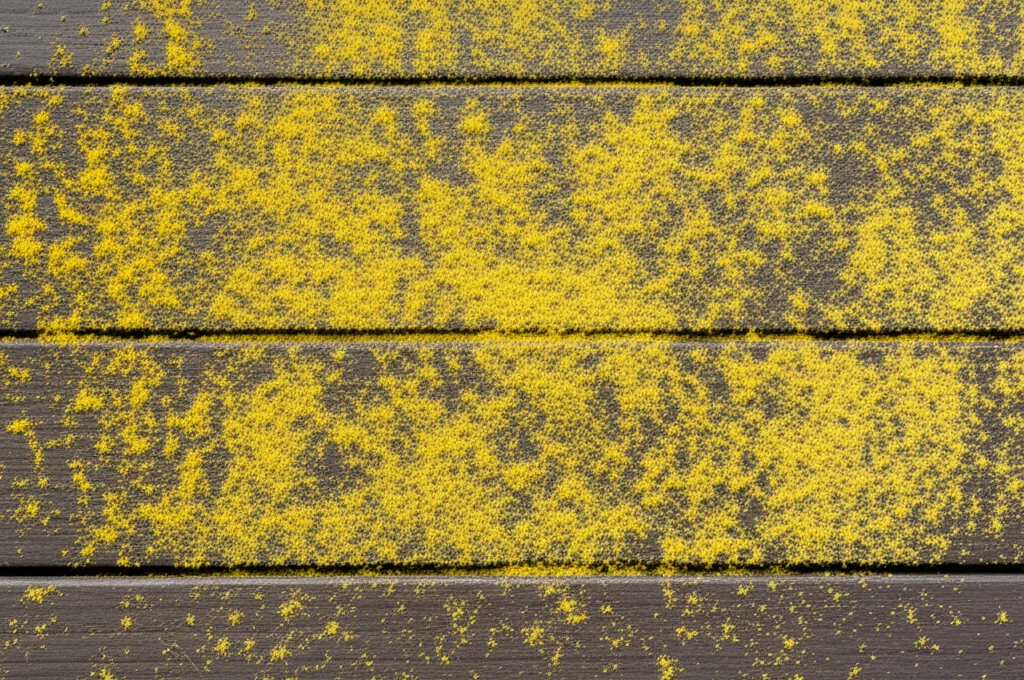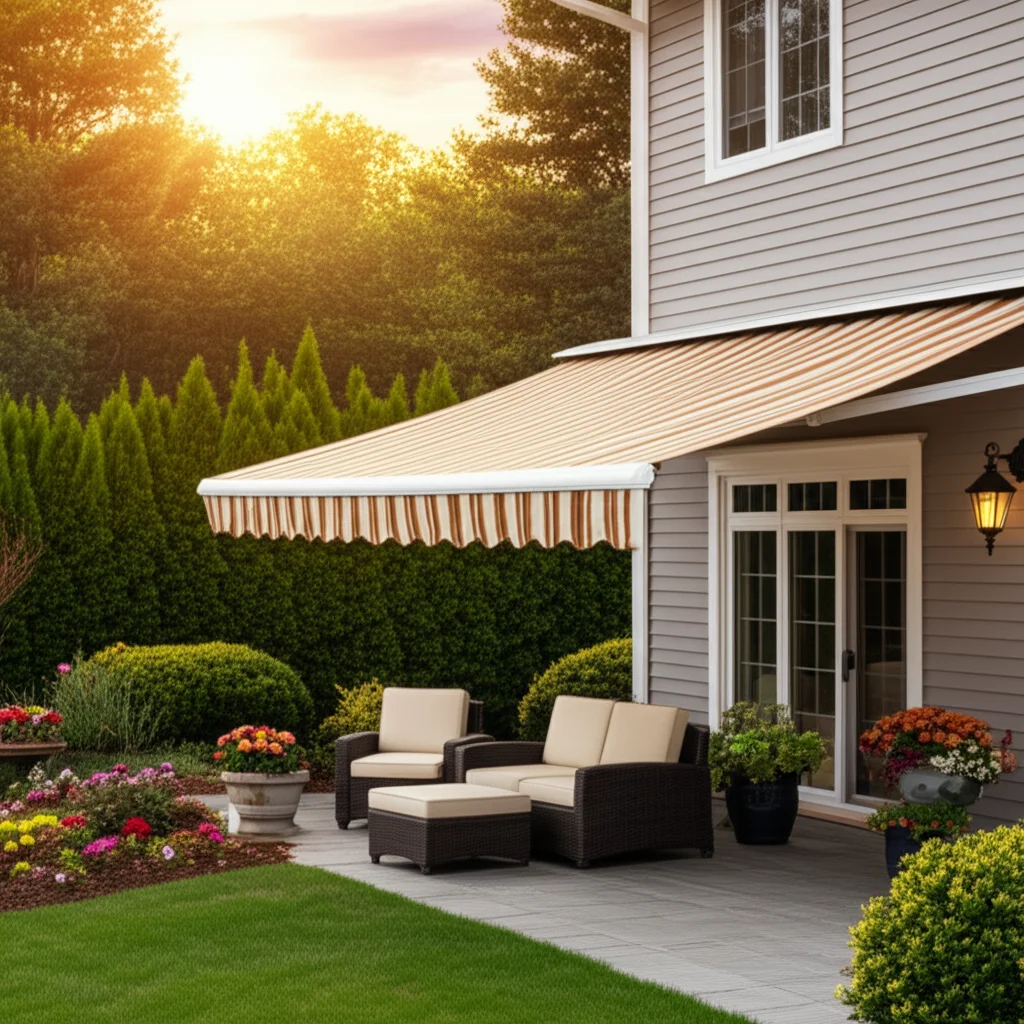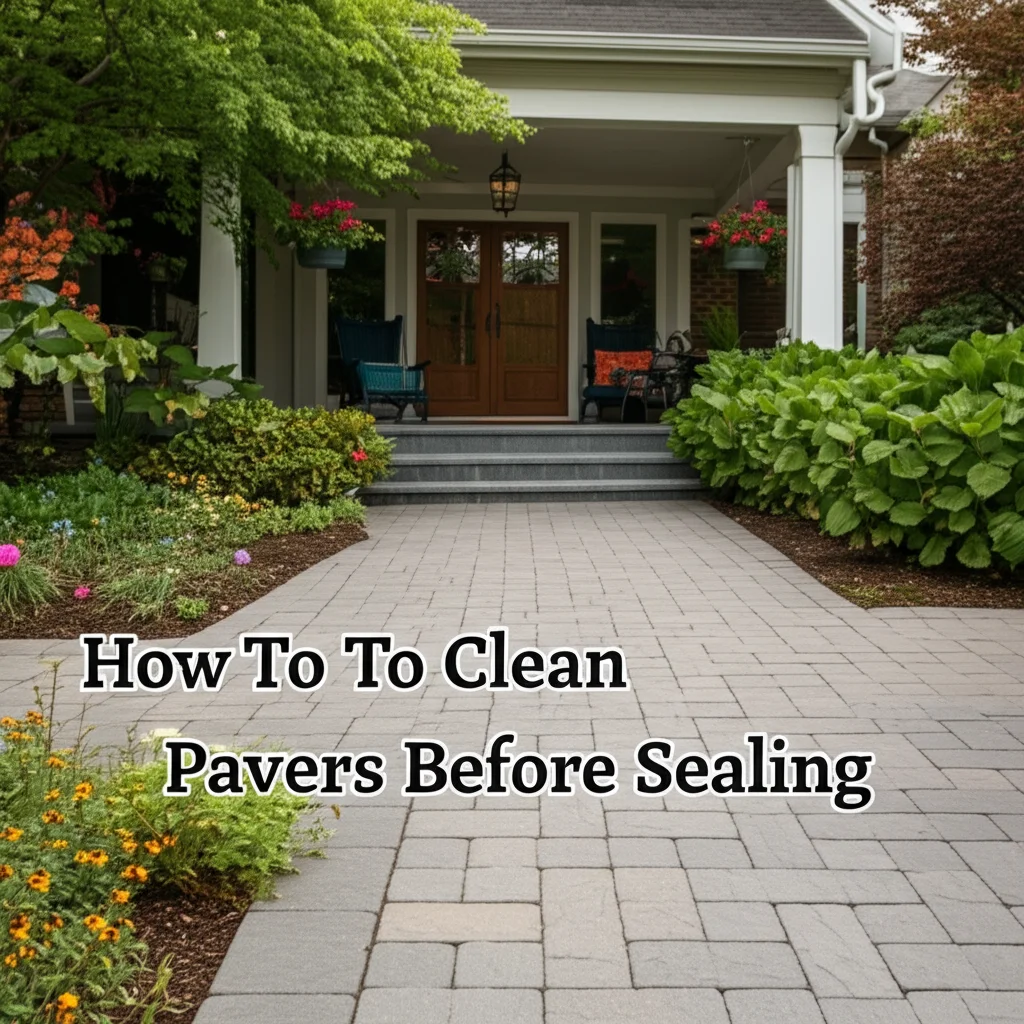· Todd Martin · Home Improvement, Outdoor Living, Cleaning · 15 min read
How To Clean Pollen Off Deck

Clear Your Deck: How to Clean Pollen Quickly
Spring brings vibrant colors and warmer days. But it also often covers everything in a blanket of yellow dust. If your beautiful outdoor deck is now coated in this fine, irritating powder, you are not alone. Pollen can make your deck unsightly, slippery, and trigger allergies. Cleaning pollen off your deck is essential for enjoying your outdoor space.
I understand the frustration of seeing your freshly cleaned deck quickly covered again. This guide will show you effective methods to clean pollen off your deck. We will explore various tools and techniques, from simple rinsing to deep cleaning solutions. You will learn how to tackle pollen on different deck materials. We will also discuss ways to keep your deck cleaner for longer. Get ready to reclaim your outdoor sanctuary.
Takeaway
- Start with dry sweeping, then use a garden hose for initial removal.
- Use mild soap and water or a vinegar solution for a deeper, safe clean.
- Consider a pressure washer for stubborn buildup, but use it carefully.
- Clean your deck regularly during peak pollen season.
- Apply sealants or stains to protect your deck and make future cleaning easier.
To clean pollen off your deck, first dry sweep to remove loose particles. Then, rinse thoroughly with a garden hose. For stubborn pollen, apply a mild soap and water solution or a diluted vinegar mix. Gently scrub, then rinse again. For very heavy buildup, a pressure washer can be used with caution.
Understanding Pollen and Its Impact on Your Deck
Pollen is a fine, powdery substance released by plants. This is how they reproduce. It travels through the air, carried by wind, insects, or animals. During spring, especially, trees, grasses, and weeds release massive amounts of pollen. This airborne dust settles on every outdoor surface, including your deck.
Pollen on your deck is more than just an eyesore. It creates several problems. First, it can make your deck incredibly slippery when wet. This poses a fall hazard for anyone walking on it. Second, pollen often contains natural dyes. These dyes can stain your deck over time, leaving yellow or greenish marks. This is especially true for lighter-colored composite or treated wood surfaces. Third, for many people, pollen triggers allergic reactions. Having a deck covered in pollen brings those allergens closer to your home and family. It makes enjoying your outdoor space difficult for allergy sufferers. Promptly cleaning your deck helps address these issues.
The type of pollen affects its stickiness and color. Pine pollen, for instance, is often thick and bright yellow. It clings to surfaces stubbornly. Other pollens might be finer and less visible but still contribute to the overall dusty look. No matter the type, the goal remains the same: a clean deck. Leaving pollen to accumulate can also create a hospitable environment for mold or mildew growth. This happens when pollen mixes with moisture and organic debris. Addressing pollen quickly prevents these larger issues.
Essential Tools and Supplies for Pollen Removal
Gathering the right tools makes the pollen cleaning process much easier. You do not need highly specialized equipment for most pollen removal tasks. A good quality broom is your first line of defense. Choose one with stiff bristles to effectively dislodge dry pollen. A garden hose with a strong nozzle is also essential for rinsing. It allows you to direct water flow and remove loose debris.
For deeper cleaning, you will need a bucket and a soft-bristle scrub brush. A car wash brush with a long handle can be very effective for reaching across the deck. When it comes to cleaning solutions, mild dish soap mixed with warm water is often sufficient. You can also use white vinegar diluted with water. For tougher stains or heavy buildup, a dedicated deck cleaner may be necessary. Always choose a cleaner suitable for your deck material.
Safety gear is also important. Wear gloves to protect your hands from cleaners and pollen. Eye protection, such as safety glasses, prevents pollen or cleaning solutions from getting into your eyes. If you are particularly sensitive to pollen, consider wearing a dust mask. This helps reduce inhalation of allergens during the cleaning process. Having everything ready before you start saves time. This ensures a more efficient cleaning experience.
Gentle Approaches: Sweeping and Rinsing
Starting with gentle methods is often the best first step to clean pollen off your deck. This approach minimizes the risk of damage to your deck material. It also helps conserve water. Your initial action should always be dry sweeping. Use a stiff-bristle broom to sweep all loose pollen and debris from the deck surface. Work from one end of the deck to the other, pushing pollen off the edges. This prevents turning the pollen into muddy streaks when water is introduced.
After sweeping, use your garden hose for a thorough rinse. Attach a spray nozzle to your hose. Set it to a strong, but not damaging, stream. Begin rinsing the deck from the highest point or furthest end. Work your way towards the drainage area or off the edge of the deck. This pushes the pollen away from the cleaned sections. Use a sweeping motion with the hose, moving the water and pollen off the surface. Low-pressure rinsing is usually sufficient for light pollen layers.
These gentle methods are often enough if you clean your deck regularly during pollen season. They are perfect for maintaining a clean surface before pollen has a chance to set. If you clean your deck before staining, this initial sweep and rinse is also a good starting point. A clean surface is crucial for proper stain adhesion. For a screened porch, a similar approach works, perhaps with gentler spraying. Learn how to clean pollen off a screened porch for more specific tips. If, after sweeping and rinsing, your deck still has a yellow haze or sticky residue, you will need to move on to deeper cleaning methods.
Deep Cleaning Methods for Stubborn Pollen
When sweeping and rinsing do not fully remove the pollen, it is time for a deeper clean. Mild soap and water are very effective for most deck materials. Mix a few squirts of mild dish soap into a bucket of warm water. Apply this solution liberally to a section of your deck using a soft-bristle brush or a mop. Allow the solution to sit for a few minutes. This helps loosen the pollen and any sticky residues. Then, gently scrub the area, working the soap into the surface. Rinse thoroughly with your garden hose, ensuring no soap residue remains.
White vinegar is another excellent natural cleaning agent. It is particularly good for dissolving pollen and preventing mold growth. Mix equal parts white vinegar and water in a spray bottle or bucket. For tougher buildup, you can use a stronger solution, up to a 1:1 ratio. Spray or pour the vinegar solution onto the pollen-covered areas. Let it sit for about 10-15 minutes. The acidity of the vinegar helps break down the pollen. Then, scrub the surface with a soft brush and rinse well with water. Vinegar is a powerful natural cleaner for various surfaces, even mold. It can be used to clean glass or even your shower. Explore more ways to clean with vinegar.
For very stubborn pollen or if your deck has other dirt and grime, a commercial deck cleaner might be necessary. Always read the product instructions carefully. Choose a cleaner formulated for your specific deck material. Most deck cleaners require dilution and application with a brush or sprayer. Follow the recommended dwell time, then scrub and rinse thoroughly. Always test any cleaner on a small, inconspicuous area first. This ensures it does not cause discoloration or damage. These methods can often clean a dirty deck without removing the existing stain. Find more tips on how to clean a dirty deck without removing stain.
Power Washing Your Deck: Pros, Cons, and Best Practices
A power washer can be a very effective tool for removing stubborn pollen and other grime from your deck. It uses high-pressure water to blast away dirt. For heavily caked-on pollen, a power washer often provides the quickest and most thorough clean. The concentrated spray can dislodge sticky pollen that other methods miss. It can also reach into crevices.
However, power washing also comes with risks. Using too much pressure or the wrong nozzle can severely damage your deck. Wood decks are especially vulnerable. High pressure can splinter wood, remove existing stains or sealants, and even gouge the surface. Composite decks are more durable, but still require caution. Incorrect pressure can damage their outer layer or surface texture. For concrete decks, higher pressure is often acceptable. Learn how to clean concrete pool decks safely for more specific advice.
When power washing, choose the right nozzle. A 25-degree (green) or 40-degree (white) fan tip is generally safest for decks. Avoid the zero-degree (red) nozzle, which delivers a highly concentrated stream. Always start with the lowest pressure setting. Test it on an inconspicuous area first. Hold the wand at a consistent distance from the deck surface, usually 6-12 inches. Use a sweeping motion, moving with the grain of the wood. Overlap your passes slightly to ensure even cleaning. Do not linger in one spot, as this can cause damage. Work in small sections, rinsing as you go. Always wear appropriate safety gear, including eye protection.
While powerful, a power washer is not always necessary for pollen. Many decks can be cleaned effectively with less aggressive methods. Consider power washing only for persistent, heavy pollen buildup or if your deck has deep-seated dirt that manual scrubbing cannot remove. It is a tool for careful, occasional use rather than routine pollen removal.
Cleaning Different Deck Materials
The type of material your deck is made from influences the best cleaning approach for pollen. Different materials react differently to water, pressure, and cleaning solutions. Understanding these differences helps protect your investment. Always identify your deck material before you start cleaning.
Wood Decks: Wood decks, whether softwood like pine or cedar, or hardwood like ipe or tigerwood, require a gentle touch. Wood is porous. It can absorb pollen and cleaning solutions. For light pollen, dry sweeping followed by a low-pressure hose rinse is often sufficient. For stubborn pollen, use a mild soap and water solution or a diluted oxygen bleach product specifically designed for wood. Apply with a soft-bristle brush, scrub gently with the grain, and rinse thoroughly. Avoid harsh chemicals or excessive pressure washing, which can damage wood fibers, remove stains, or lead to mold growth. After cleaning, consider applying a sealant or stain to protect the wood and make future pollen removal easier. You can find tips on how to clean stains on wood for more general wood cleaning advice.
Composite Decks: Composite decks, made from a blend of wood fibers and plastic, are generally less porous and more durable than wood. They are also less prone to staining from pollen. A simple sweep and rinse with a garden hose often works well for composite. For more persistent pollen, a mild soap and water solution is usually effective. You can use a soft-bristle brush to scrub. Rinse thoroughly to prevent water spots. While composite decks can handle more pressure than wood, still use caution with a power washer. Stick to a wide fan tip and moderate pressure to avoid damaging the surface. Avoid abrasive cleaners or brushes, which can scratch the composite material.
Concrete and Paver Decks: Concrete and paver decks are highly durable and less susceptible to pollen staining. Pollen tends to sit on top of the surface rather than soaking in. Dry sweeping is an excellent first step. A strong blast from a garden hose can often remove most pollen. For stubborn pollen or general grime, a solution of mild detergent and water, or a diluted vinegar solution, works well. Apply, scrub with a stiff brush, and rinse. Concrete and paver decks can typically withstand higher pressure washing. However, always start with a lower setting and gradually increase pressure as needed. Be careful not to dislodge pavers or damage grout lines. If you have concrete surfaces around your pool, you can find specific cleaning tips for concrete pool decks here. For travertine, use specialized cleaners. Learn how to clean a travertine pool deck for more information. These decks generally clean up easily, making pollen removal less of a chore.
Preventing Pollen Buildup and Long-Term Deck Care
While completely stopping pollen from landing on your deck is impossible, you can take steps to reduce its accumulation and make cleaning easier. Prevention is key to maintaining a consistently clean outdoor space. A proactive approach saves you time and effort in the long run.
One of the most effective preventive measures is regular cleaning. During peak pollen season, dry sweep your deck daily or every other day. This prevents large amounts of pollen from accumulating and settling deep into the surface. A quick sweep takes only a few minutes. It can significantly reduce the need for more intensive cleaning later. After sweeping, a quick rinse with a garden hose on a low setting can help wash away any remaining loose pollen. This frequent maintenance schedule keeps pollen from becoming a stubborn problem.
Applying a high-quality deck sealant or stain offers significant protection. For wood decks, a good sealant creates a barrier. This barrier makes the surface less porous. Pollen, dirt, and moisture are less likely to penetrate and stain the wood. Stains also provide a protective layer, often with UV inhibitors. These products help repel water and prevent pollen from adhering as strongly. If your deck is due for staining or sealing, ensure it is thoroughly cleaned first. Proper cleaning before staining is vital for durability. For composite decks, while they do not require sealing, some products can enhance their resistance to dirt and pollen.
Consider landscaping choices around your deck. If you have high pollen-producing trees or plants nearby, you might consider pruning them. Or, choose low-pollen varieties for new plantings. Placing outdoor rugs in high-traffic areas can trap some pollen. You can shake these rugs out regularly. Covering outdoor furniture and grills during peak pollen season also keeps them cleaner. When pollen season is at its worst, a temporary deck cover, if practical, can offer substantial protection. These long-term care strategies help minimize pollen problems and keep your deck inviting.
Frequently Asked Questions
Q1: How often should I clean pollen from my deck? During peak pollen season, clean your deck frequently. Dry sweeping every day or every other day is ideal. A thorough rinse with a hose can be done weekly. If you notice a thick layer of yellow dust or if rain turns it into a sticky film, clean it promptly. Regular, light cleaning prevents pollen from hardening and becoming difficult to remove.
Q2: Can pollen stain my deck? Yes, pollen can stain your deck, especially lighter-colored wood or composite materials. Pollen contains natural pigments that can leave a yellow or greenish tint. When mixed with moisture and left to sit, these stains can become quite stubborn. Prompt cleaning helps prevent these unsightly discolorations from setting into the deck surface.
Q3: Is pressure washing safe for all decks? Pressure washing is not equally safe for all decks. It can be too aggressive for certain materials. High pressure can splinter wood, damage composite surfaces, or dislodge pavers if used incorrectly. Always use a wide fan tip (25 or 40 degrees) and start with the lowest pressure setting. Test on an inconspicuous area first.
Q4: What natural solutions can I use for pollen? Mild soap and water is an excellent natural solution for cleaning pollen. Mix a few drops of dish soap in a bucket of warm water. Another effective natural cleaner is white vinegar diluted with water. A 1:1 ratio for vinegar and water often works well. Both are safe for most deck materials and environmentally friendly.
Q5: Will sealing my deck prevent pollen buildup? Sealing your deck, especially a wood deck, can help prevent pollen from embedding into the surface. Sealants create a smoother, less porous barrier. This makes it harder for pollen to stick and easier to rinse off. While it won’t completely stop pollen from landing, it significantly improves the ease of cleaning.
Q6: Does pollen make decks slippery? Yes, pollen makes decks very slippery, especially when wet. The fine, powdery particles create a slick film on the surface. When rain or dew combines with this pollen, it becomes extremely hazardous. This is a significant reason to remove pollen promptly from your deck. Regular cleaning helps prevent dangerous slip-and-fall accidents.
Conclusion
A deck covered in yellow pollen can quickly dampen your enjoyment of outdoor living. It is more than just an aesthetic issue; it can pose safety hazards and contribute to allergies. Fortunately, cleaning pollen off your deck is a manageable task with the right approach. We have explored a range of effective methods, from simple dry sweeping and gentle rinsing to more intensive deep cleaning with soap, vinegar, or even a power washer.
Remember to consider your deck material when choosing your cleaning strategy. Wood, composite, and concrete decks each respond best to specific care. Starting with the least aggressive method, like sweeping and hosing, is often the smartest first step. For stubborn pollen, graduating to mild cleaning solutions will usually do the trick. By following these guidelines, you can restore your deck’s beauty and safety. Do not let pollen win the battle for your outdoor space. Take action, and reclaim your pristine deck. Enjoy your clean, inviting deck all season long.




